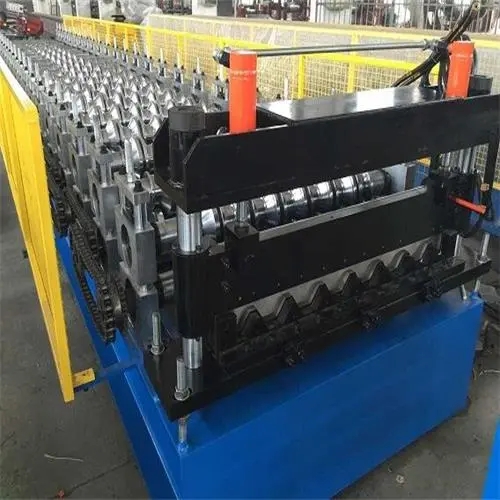
Understanding Standing Seam Profile Roll Forming Machines
The construction industry has seen a significant rise in the use of metal roofing systems, particularly standing seam roofs. These roofs not only enhance the aesthetic appeal of a structure but also offer durability and longevity. At the core of producing standing seam roofing panels lies the standing seam profile roll forming machine. This article will delve into the intricacies of these machines, their functionality, and their impact on modern construction.
What is a Standing Seam Profile Roll Forming Machine?
A standing seam profile roll forming machine is a specialized piece of equipment designed to manufacture standing seam metal roofing panels. The term standing seam refers to the vertical parts of the metal roof panels that interlock, creating a distinctive raised appearance. This interlocking design not only serves a functional purpose by preventing water intrusion but also contributes to the roof's overall longevity by allowing for structural expansion and contraction.
How Does It Work?
The process begins with feeding coils of metal into the roll forming machine. These coils are typically made from materials such as steel, aluminum, or copper. As the metal strip moves through the machine, it passes through a series of rollers, each of which progressively shapes the metal into the desired profile.
The profile is formed through a continuous bending process, where each roller alters the shape slightly until the final product emerges. The machine can produce various seam designs and panel widths, allowing for customization based on specific project requirements. After the panels are formed, they are cut to length and can be further processed if needed.
Features and Benefits

1. Precision Engineering Modern standing seam profile roll forming machines are equipped with advanced technology that ensures high precision in the manufacturing process. This precision is crucial for achieving the desired seam height and width, which are vital for the overall effectiveness and appearance of the roofing system.
2. High Production Capacity These machines are designed for efficiency, enabling manufacturers to produce large volumes of roofing panels in a relatively short period. This capability is essential for meeting the demands of large construction projects.
3. Customization Options The versatility of roll forming machines allows them to create a variety of panel profiles and sizes. Clients can request specific designs, ensuring that their roofing solutions meet both aesthetic and functional requirements.
4. Durability The materials used in combination with the standing seam design contribute to the roof's longevity. The roll forming process enhances the strength of the panels, making them resistant to wind uplift, thermal expansion, and contraction.
Applications in Construction
Standing seam roofs have become a popular choice in various applications, including residential, commercial, and industrial buildings. They are particularly advantageous in regions prone to heavy snowfall or rainfall due to their excellent water-shedding properties. Additionally, the seamless appearance of standing seam roofs complements modern architectural styles, making them a preferred choice among architects and builders.
Conclusion
Standing seam profile roll forming machines play a crucial role in the construction industry by enabling the mass production of high-quality metal roofing panels. Their efficiency, precision, and versatility contribute significantly to the quality and durability of standing seam roofs. As the demand for sustainable and reliable building materials continues to grow, the importance of these machines in producing advanced roofing systems cannot be overstated. With ongoing technological advancements, the future of roll forming machines holds promise for innovation and enhanced performance in the metal roofing sector.